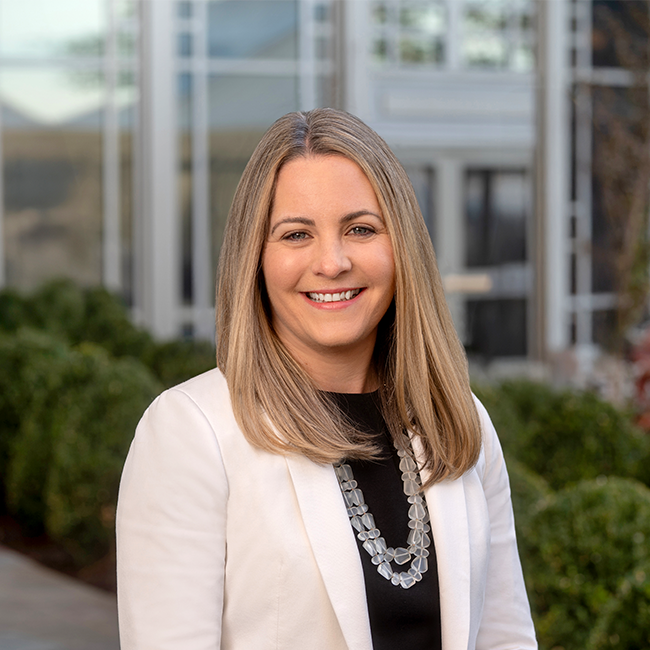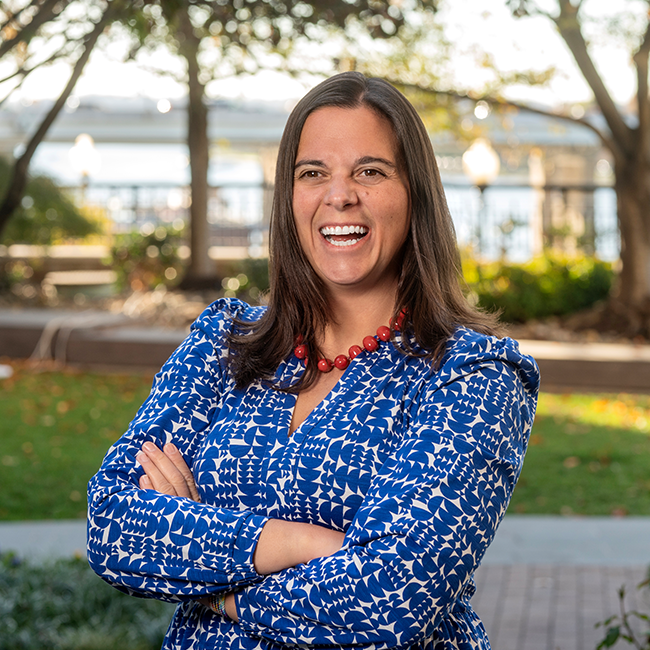Robert M. Califf, M.D.
Commissioner
US Food and Drug Administration
Silver Spring, MD 20993
Re: Comment Letter on Listening Session: Optimizing the Food and Drug Administration’s Use of and Processes for Advisory Committees; Public Meeting; Request for Comments [Docket No. FDA–2024–N–1809]
Dear Dr. Califf,
The FasterCures team at the Milken Institute is honored to provide its response to the Request for Comments on Optimizing the Food and Drug Administration’s Use of and Processes for Advisory Committees; Public Meeting; Request for Comments [Docket No. FDA–2024–N–1809].
As a nonprofit, nonpartisan think tank, the Milken Institute believes in the power of capital markets to solve urgent social and economic challenges to improve lives. At the heart of the Institute’s work is the idea that societies prosper with an educated, healthy workforce, open and efficient capital markets, and effective social institutions. FasterCures is driven by a singular goal: to save lives by speeding scientific advancements to all patients.
For the last 15 years, FasterCures has advanced patient engagement in biomedical research by bringing together diverse stakeholders to assess gaps, identify solutions, and develop the tools and resources to support decision-making. Over the past decade, considerable progress has been made toward integrating patient perspectives and input into biomedical research, as evidenced by the proliferation of legislation, regulatory guidance, and resources to expand patient-centric approaches.
The US Food and Drug Administration (FDA) seeks independent and professional advice from external experts through FDA Advisory Committees to help the agency make sound decisions about evaluating increasingly complex medical products.[1] This allows for more comprehensive, informed decision-making with diverse perspectives from science-oriented professionals, patients, health-care providers, and others for the most challenging questions faced by the FDA.[2]
FasterCures appreciates the thoughtful questions the FDA has posed, which truly reflect the agency’s intention to reform its approach to seeking advice from the best science possible. We welcome the opportunity to provide our expert recommendations and are willing to serve as a partner in the FDA’s endeavor, particularly on ways to improve the composition of the committees and clarify the public perceptions of the committees. Our recommendations are:
-
Include one patient and one patient advocate as permanent voting members of each advisory committee to broaden the patient experiences and perspectives in every advisory committee meeting, with rare exceptions for the meetings that do not discuss patient-relevant information, such as manufacturing or pharmacology discussion.
-
Establish structured, scientifically validated questions to collect patient experiences and perspectives to generate meaningful information to advise on the FDA’s evaluation of medical products.
-
Continue to use voting to provide recommendations, including the patient and patient advocate as voting members, and implement scaled questions for voting.
-
Provide clear rationales to the public and the scientific community as to how the committee recommendations are considered and why the FDA decided to accept or reject such recommendations.
-
Use social media or other channels to communicate in plain language the roles of advisory committees and their meaning to the FDA.
Recommendations to ‘Topic 1: Composition of Advisory Committees’
1. Flexibility of committee composition or expertise at a particular meeting (relevant to Question 1).
The Federal Advisory Committee Act (FACA) defines the purpose of the advisory committees within the US federal government.[3] According to the statutory definition, the advisory committee is solely utilized for advisory functions, and the determinations of action toward policy should only be made by the president or an officer of the federal government.
At the FDA, advisory committees provide professional and independent advice outside the agency on scientific, technical, and policy-relevant issues in evaluating new medical products.[4] The FDA established the Patient Representative Program, which allows patients and caregivers to provide critical advice and have a voice regarding their experiences with diseases, conditions, and medical products. The agency recruits FDA Patient Representatives on an as-needed basis, and these members are temporary and non-voting members of the advisory committees.[5] As such, the charters of the 33 FDA advisory committees do not define the role of a patient representative nor describe when and how the committee will engage a patient member.[6]
First, we believe that the infrequent, needs-based, and temporary inclusion of a patient as a non-voting member goes against the agency’s decades of progress toward patient-focused medical product development.
The history of the FDA's efforts since the late 1980s can provide insight into the evolution of patient engagement initiated by HIV/AIDS activists.[7] To systemically integrate patient engagement, the Center for Drug Evaluation and Research and the Center for Biologics Evaluation and Research created the Patient-Focused Drug Development (PFDD) Program, the Patient Preference Initiative out of the Center for Devices and Radiological Health, the Patient Engagement Advisory Committee, and the FDA Patient Council. It was first mandated by the Food and Drug Administration Safety and Innovation Act of 2012 and later supported by the 21st Century Cures Act and subsequent Medical Device User Fee Amendments and Prescription Drug User Fee Act Reauthorizations. Such progress and principles from the PFDD Program should be reflected in all aspects of patient engagement by the FDA, including the advisory committee meetings.
The FDA also acknowledges that patients are experts “in what it is like to live with their condition” and uniquely poised to inform the therapeutic contexts in medical product approvals.[8] We believe patient input is a critical form of expertise on par with the scientists and health-care professionals currently serving as voting members. Patients and patient advocates have the critical expertise to serve as permanent voting members of advisory committees. In addition, having permanent voting representatives from patient communities in advisory committees’ recommendations may also mitigate persistent criticism from the patient communities after the FDA’s final decision is made.
Second, for the agency to collect scientifically sound and representative points of view, we believe the FDA must follow the patient experience data categorized within its guidance documents.[9] The first PFDD guidance, “Patient-Focused Drug Development: Collecting Comprehensive and Representative Input,” describes the categories of patient experience data with examples.[10]
-
“The signs and symptoms patients experience and how these signs and symptoms affect their day-to-day functioning and quality of life
-
The course of their disease over time, including the effect the disease has on patients’ day-to-day function and quality of life over time and the changes that patients experience in their symptoms over time
-
Patients’ experience with the treatments for their disease: the symptoms and burdens related to treatment
-
Patients’ views on potential disease or treatment outcomes and how they weigh the importance of different possible outcomes
-
How patients view the impact of the disease, treatment, and outcomes, and their view of potential tradeoffs between disease outcomes and treatment benefits and risks”
From various advisory committee meetings, we have observed that advice sought from patient representatives is insufficient to reflect the depth and breadth of patient experience data, as defined by the FDA PFDD Program. Structured, scientifically validated questions to collect patient experience are important to turn what is often perceived as subjective patient perceptions into meaningful, quantifiable, and representative data to advise on the FDA’s evaluation of medical products.
2. Mechanisms to ensure diverse perspectives and experiences in committee meetings (relevant to Question 2).
The FDA provides multiple opportunities for patients, caregivers, and the advocacy community to share experiences and perspectives directly with FDA staff.[11] These opportunities serve different functions for the FDA centers; however, all strive to engage multiple patients and relevant stakeholders to reflect diverse patient experiences and opportunities. The FDA Patient Representative Program recruits and trains capable patient representatives who can provide meaningful data on patient needs, priorities, and preferences to inform product development and regulatory decision-making.[12]
Although they are recruited to represent the patient community for a specific disease and condition, each individual representative also brings their own personal experience as a patient or a caregiver. Even with patient experience gathered according to the PFDD principles during advisory committee meetings, as recommended in the previous paragraph, we firmly believe that one patient cannot represent the entire patient community. Instead, the FDA should consider an additional member from a patient organization, selected according to the criteria determined by the FDA Patient Representative Program. Patient organization representatives, as they have been at the forefront of advocacy for the disease and condition, may also possess a broader understanding of their patient community experience and preferences and will be adequate representatives for advisory committee meetings in addition to a patient representative.
In summary, for Topic 1, FasterCures recommends adequately representing diverse patient experiences and perspectives with relevant expertise, viewpoints, and voices.
-
Include one patient and an additional patient advocate who can broaden the patient experiences and perspectives during all advisory committee meetings. We acknowledge that there might be rare exceptions to this with advisory committees that do not discuss patient-relevant information (e.g., the Pharmaceutical Science and Clinical Pharmacology Advisory Committee and the Device Good Manufacturing Practice Advisory Committee).
-
Ensure that patient and patient advocate representatives are permanent members of each advisory committee, not temporary, needs-based members.
-
Establish structured, scientifically validated questions to collect patient experiences and perspectives to generate meaningful information to advise on the FDA’s evaluation of medical products.
Recommendations to ‘Topic 3: Public Perception and Understanding of Advisory Committees’
FDA Advisory Committees have long been a trusted and valuable input into the FDA’s evaluation of medical products when complex scientific questions have arisen. Throughout various guidance documents, the agency clearly states the intended role of the committees to provide independent expert advice as they evaluate products, which helps them make sound decisions based on the best available science.[13] The FDA also established a mechanism for the public to engage by participating in advisory committees and having an open public hearing portion of the advisory committee meeting.[14] This opened a door for the public to participate in the FDA’s decision-making mechanism, which will ultimately impact the availability of safe and effective medical products to the public. As the name states, advisory committees are “advisors,” not decision-makers; therefore, the public must understand the role of advisory committees and how to engage with the FDA.
3. Improving public awareness of the role of advisory committees (relevant to Questions 6, 7, and 8).
During the recent FDA listening session on June 13, 2024, one contributor anecdotally indicated that some members of the public may possess a misconstrued perception of the role of FDA advisory committees. Some may perceive the committee's votes as equal to the official FDA approval decision.
FDA needs to be more explicit and conduct robust public education and awareness efforts on the role of the advisory committees and the meaning of voting in all communications leading up to and following committee meetings and during the open public hearing portion of the meetings. The FDA should also communicate through diverse channels that advisory committee meetings are opportunities for both the public to engage and for experts to discuss scientific data and evidence to better inform FDA’s final decision. Transparent communications based on the intent of these advisory committees can increase trust in FDA processes.
Potential steps that the FDA could take include:
-
developing plain language materials to explain how advisory committees are used to inform FDA decisions and what votes and recommendations mean to the FDA’s decision-making,
-
including a disclaimer about the role of advisory committees and the purpose of votes on all materials and webpages related to advisory committees, and
-
leveraging social media platforms and public meetings to raise awareness and understanding of advisory committee functions.
4. Communicating clearly with the public about the role and recommendations of advisory committees (relevant to Questions 9 and 10).
Advisory committees typically deliver advice in two ways: through discussion and/or suggestions among and from committee members and voting on the question(s) posed during committee meetings. The FDA website clearly indicates that advisory committees make nonbinding recommendations to the FDA, and the agency makes the final decisions based on the available science and data.[15]
FasterCures recommends that advisory committees continue to use voting to provide recommendations to the FDA and to prompt further advisory committee discussion. The voting gives equal voice to all voting members, allowing for more transparency by putting committee decisions on the record and prompting opinions from more reserved committee members. It also provides a mechanism to draw out more robust committee discussions through the prompting of pre-vote discussion and post-voting explanatory discussion. It also provides a more accurate picture of the committee recommendations as opposed to speculative conclusions that might be inferred from the discussion.
A recommendation using a scaled voting mechanism like a Likert scale might allow committee members to express the ranges of certainty of their recommendations.[16] This method may replace dichotomous questions, which may be perceived as a determination of the committee members.
The FDA should also communicate clearly with the public about how advisory committee discussions and public inputs were considered in the FDA’s approval or complete response letter. Especially when FDA decisions are discordant with advisory committee votes and recommendations, the FDA needs to provide clear rationales to both the public and the scientific community, explaining how advisory committee input was considered and why its decisions did (or did not) align with advisory committee recommendations. This will also increase public understanding of the advisory committee's functions and processes, steering away from potential public misconceptions and deepening public trust in the FDA’s decision-making.
In summary, for Topic 3, FasterCures recommends several mechanisms for the FDA to improve public awareness of the roles and processes of advisory committees.
-
Use social media or other channels to clearly communicate in plain language the roles of advisory committees and their meaning to the FDA.
-
Retain advisory committee voting to give all voting members a clear and equal voice.
-
Consider using scaled questions, allowing voting members to express a range of certainty in their votes.
-
Provide clear rationales to the public and the scientific community on how the committee recommendations are considered and why the FDA decided to adopt or reject such recommendations.
Since the 1980s, the FDA advisory committees have provided independent and professional advice to the agency and aided the agency's mission of evaluating medical products based on the best science available. FasterCures emphasizes the FDA's opportunity to advance patient-centricity throughout the life cycle of medical products. By implementing scientific questions to collect patient input and making a patient and a patient advocate permanent voting members, the agency will be able to solicit appropriate and relevant patient advice. In addition, our recommendations will dramatically improve the advisory committee process and the quality and breadth of patient inputs and increase public trust in the FDA’s decision-making, delivering its mission “for protecting the public health by ensuring the safety, efficacy, and security” of the public.
FasterCures is eager to collaborate with the FDA’s advisory committee reform to adequately represent diverse patient experiences and perspectives with relevant expertise, viewpoints, and voices and reduce the public's misunderstanding of advisory committees' roles. We stand by to partner with the FDA to provide support.
Sincerely,
Esther Krofah
Executive Vice President, Health
Milken Institute



















